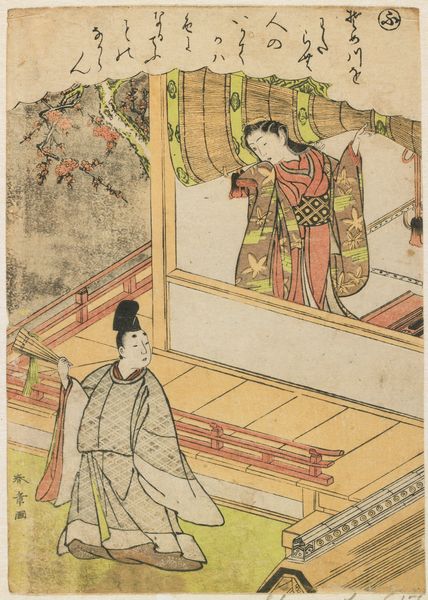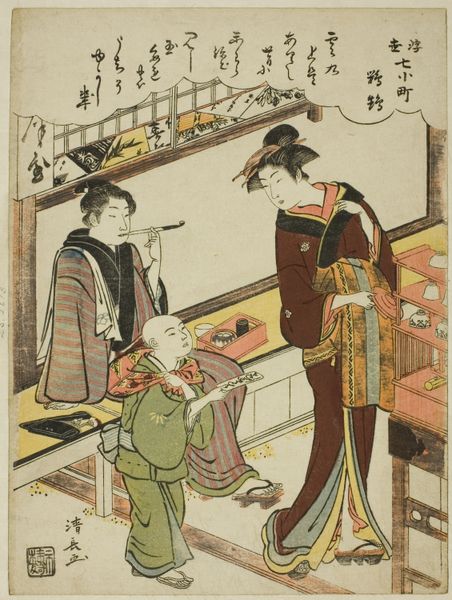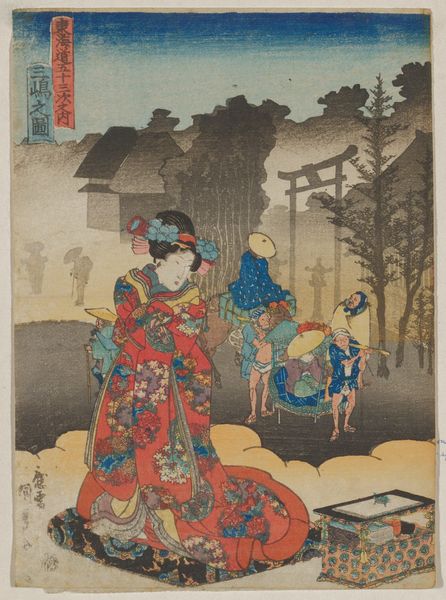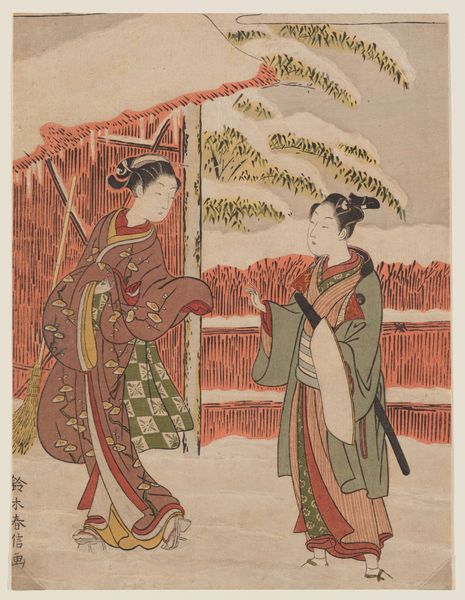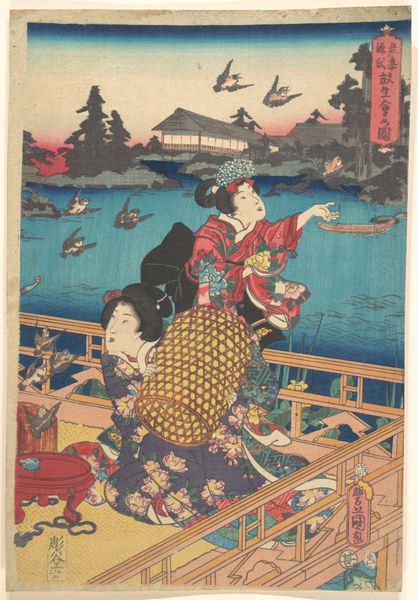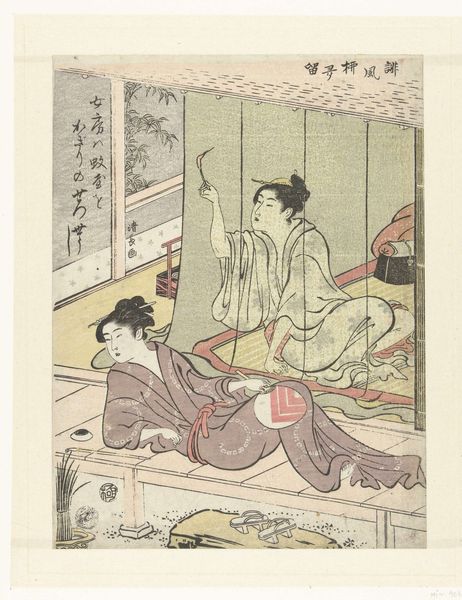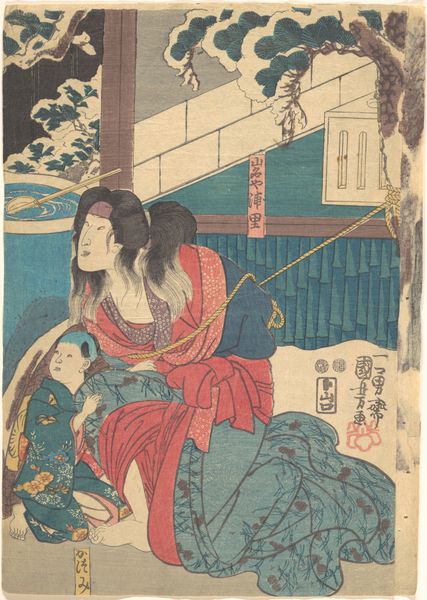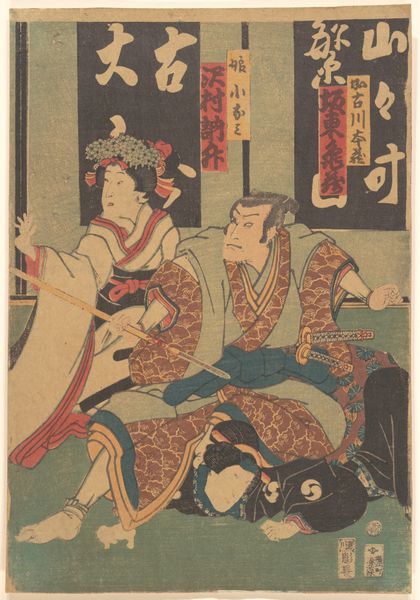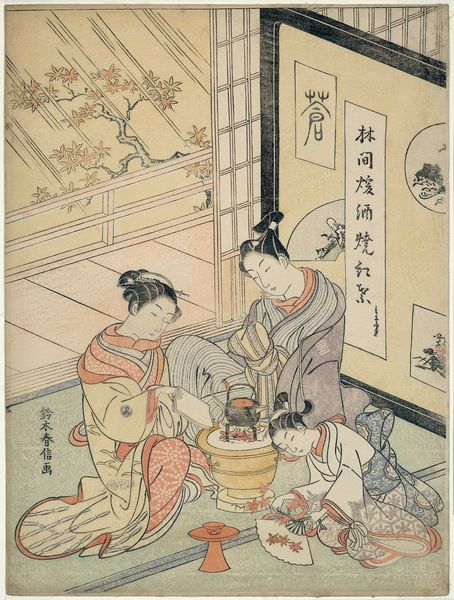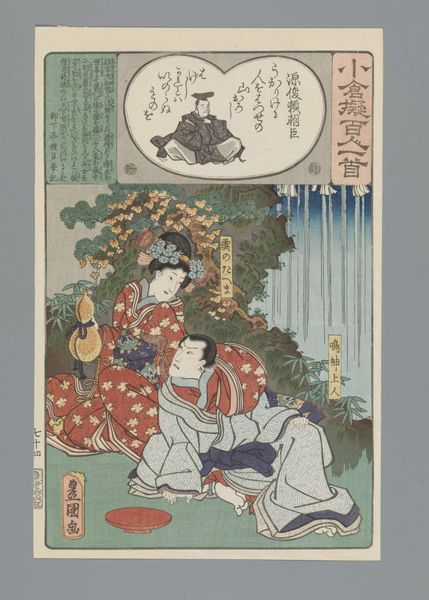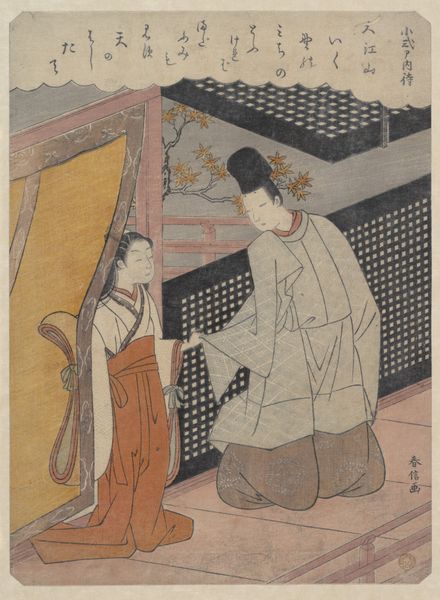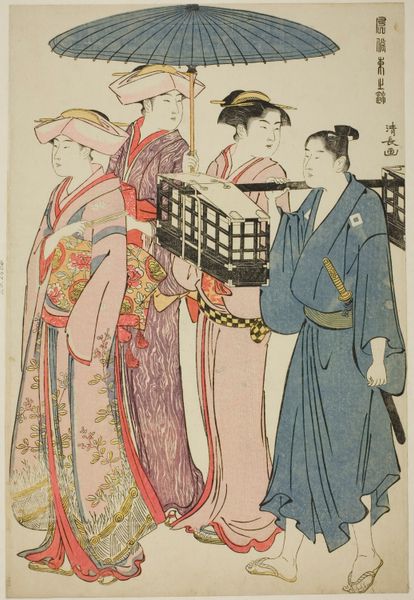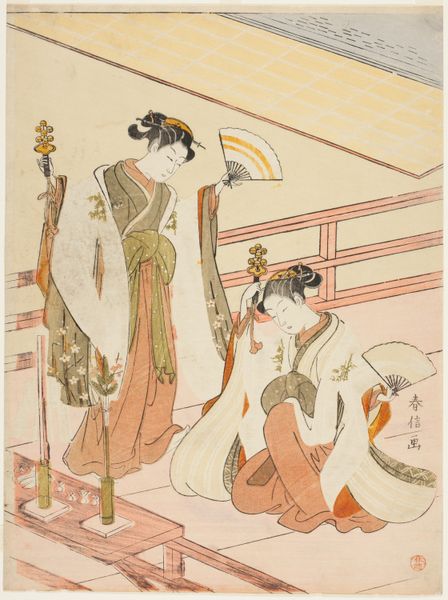
“Enjoying the Evening Cool near Lord Nabeshima’s Warehouses” (Fūryū Nabeshima yūsuzumi) 1815 - 1835
0:00
0:00
# print
#
asian-art
#
sketch book
#
landscape
#
ukiyo-e
#
genre-painting
Dimensions: Each sheet : 14 3/4 x 10 5/8 in. (37.5 x 27 cm)
Copyright: Public Domain
Curator: At first glance, the subdued color palette in this Ukiyo-e print creates such a cool and relaxing mood. Editor: Indeed, this piece, “Enjoying the Evening Cool near Lord Nabeshima’s Warehouses” made between 1815 and 1835, by Jukakudo Masakuni offers an intimate peek into the intersection of leisure and economics of the Edo period. Notice the sitters' fine summer kimono—evidence of a specific class enjoying the evening breeze near what would likely be a major rice storage hub along the river. Curator: It’s interesting how Masakuni renders this scene using woodblock printing techniques, creating depth and texture in the fabric, sky, and even the river’s surface. Editor: Let’s think about those techniques in terms of social status, though. Ukiyo-e prints like this were incredibly popular amongst the emerging merchant class. The means of producing these prints were quite labor intensive, and also required complex networks for distribution—from the artisans who crafted the blocks to the print sellers who sold them. Curator: And how readily available these prints became underscores your point about commerce, consumption, and also technological advances during that time. They weren’t made for the elites. This allowed the merchant classes to depict and purchase scenes of everyday life and leisure. I find the texture of the night sky compelling, so rich against the buildings and figures in the foreground. Editor: Look more closely at those buildings and figures, though. It's a constructed view of leisure, one where men take their ease in a society built on rigid hierarchies and often exploitative economic relationships—including the rice trade, as it seems represented by Nabeshima’s storehouses. It prompts consideration of the lived experiences of different people—who got to enjoy such leisurely scenes and who worked in service roles to create the circumstances that supported the sitters. Curator: That’s an important dimension to bring to light, one easily romanticized due to its gentle portrayal of a seemingly pleasant summer evening. Thinking of Masakuni’s chosen material, the very nature of woodblock printing lends itself to widespread production and distribution, making art more accessible, affordable and embedded within systems of consumption and labor. Editor: And that is also why such material is important and speaks volumes to the socio-economic circumstances in which the work was conceived and disseminated, a window into the lives and realities of that period. Curator: Thanks for taking the time with this piece; it will surely have patrons lingering here, examining the scene!
Comments
No comments
Be the first to comment and join the conversation on the ultimate creative platform.
